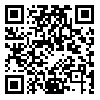Volume 15, Issue 1 (3-2015)
Modares Mechanical Engineering 2015, 15(1): 390-396 |
Back to browse issues page
Download citation:
BibTeX | RIS | EndNote | Medlars | ProCite | Reference Manager | RefWorks
Send citation to:



BibTeX | RIS | EndNote | Medlars | ProCite | Reference Manager | RefWorks
Send citation to:
Allahdadian A A, Hasanpour K. Comparison of the Effect of Different Yield loci to Prediction of Ti64 Titanium Alloy Forming Limit Diagram. Modares Mechanical Engineering 2015; 15 (1) :390-396
URL: http://mme.modares.ac.ir/article-15-4065-en.html
URL: http://mme.modares.ac.ir/article-15-4065-en.html
Abstract: (5153 Views)
Mathematical modeling is an important step in the design and optimization of process parameters for metal forming. Researchers have been concerned the metal forming limit diagram as an efficient tool to optimize the production of components using forming methods. Due to the low ductility of titanium alloys and wide applications of these alloys in advanced industries such as aerospace, researchers have focused on studying the forming behavior of these alloys. Due to the high cost of experimental methods, especially at high temperatures, numerical methods, has attracted the attention of many researchers. The accuracy of the numerical methods is affected by model of elastic-plastic material behavior. Unusual mechanical behavior of Ti-64 titanium alloys such as high in-plane anisotropy/asymmetry of yield stress and hardening response has been observed. In this paper, the Marciniak model with Cazacu and Hill yield criterions has been used for forming limit prediction. It is observed that the prediction of forming limit using the Cazacu criterion is closer to the experimental results. This is due to the better prediction of the behavior of the titanium alloy, specially Lankford and stress anisotropy coefficients by Cazacu criterion. Cazacu and Hill criterions prediction of Lankford coefficients and yield stresses have been compared.
Article Type: Research Article |
Subject:
Elasticity & Plasticity
Received: 2014/08/15 | Accepted: 2014/11/6 | Published: 2014/12/17
Received: 2014/08/15 | Accepted: 2014/11/6 | Published: 2014/12/17
| Rights and permissions | |
 |
This work is licensed under a Creative Commons Attribution-NonCommercial 4.0 International License. |







